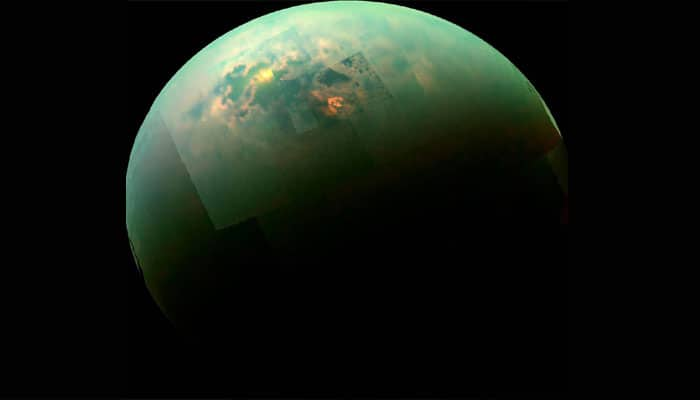New Delhi: NASA's Cassini spacecraft has always awed space enthusiasts with enlightening images of its numerous flybys of the planet Saturn and its moons.
The most flambuoyant and intriguing of Saturn's moons has undoubtedly been Titan. Titan is one moon that boasts of having a dense atmosphere and large liquid reservoirs on its surface, making it in some ways more like a terrestrial planet.
Cassini has beamed back yet another evolutionary image of a transient feature in the moon – a Methane sea!
There are three large seas, all located close to the moon's north pole, surrounded by numerous of smaller lakes in the northern hemisphere. Just one large lake has been found in the southern hemisphere.
According to NASA, the exact composition of these liquid reservoirs remained elusive until 2014, when the Cassini radar instrument was first used to show that Ligeia Mare, the second largest sea on Titan and similar in size to Lake Huron and Lake Michigan combined, is methane-rich. A new study published in the Journal of Geophysical Research: Planets, which used the radar instrument in a different mode, independently confirms this result.
"Before Cassini, we expected to find that Ligeia Mare would be mostly made up of ethane, which is produced in abundance in the atmosphere when sunlight breaks methane molecules apart. Instead, this sea is predominantly made of pure methane," said Alice Le Gall, a Cassini radar team associate at the French research laboratory LATMOS, Paris, and lead author of the new study.
The new study is based on data collected with Cassini's radar instrument during flybys of Titan between 2007 and 2015.
A number of possible explanations could account for the sea's methane composition, according to Le Gall. "Either Ligeia Mare is replenished by fresh methane rainfall, or something is removing ethane from it. It is possible that the ethane ends up in the undersea crust, or that it somehow flows into the adjacent sea, Kraken Mare, but that will require further investigation."
In their research, the scientists combined several radar observations of heat given off by Ligeia Mare. They also used data from a 2013 experiment that bounced radio signals off Ligeia. The results of that experiment were presented in a 2014 paper led by radar team associate Marco Mastrogiuseppe at Cornell University, Ithaca, New York, who also contributed to the current study.
During the 2013 experiment, the radar instrument detected echoes from the seafloor and inferred the depth of Ligeia Mare along Cassini's track over Ligeia Mare -- the first-ever detection of the bottom of an extraterrestrial sea. The scientists were surprised to find depths in the sea as great as 525 feet (160 meters) at the deepest point along the radar track.
















